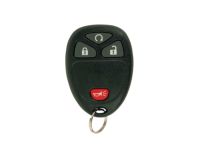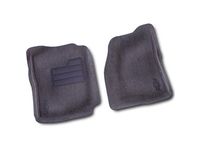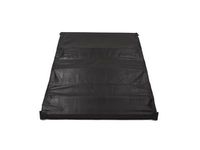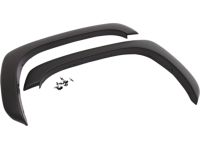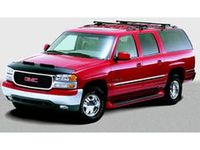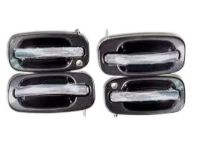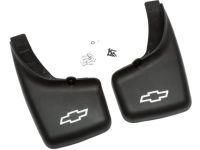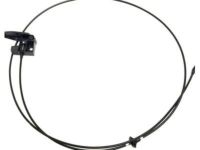Why choose GMPartsGiant
- Optimal Shopping Experience
Want to buy parts for your Chevrolet Avalanche? Look no further than GMPartsGiant.com, the best place for Chevrolet Avalanche genuine parts. For years, all of our Chevrolet Avalanche auto parts and accessories have been expedited directly from dedicated dealers and backed by the manufacturer's warranty, so buying from GMPartsGiant.com is always risk-free.
- Dedicated Customer Service
Our first-class customer service team is committed to providing you with the best assistance possible. Dedicated representatives are standing by to assist you by email, live chat, or phone. Every effort is made to ensure your order for OEM Chevrolet Avalanche parts arrives fast no matter your location in the nation, so your vehicle is up and running and back on the road.
- Unbeatable Prices
What makes us the best online source for Chevrolet Avalanche parts and Chevrolet Avalanche truck parts? Our goal is to offer the lowest prices. You get giant savings shopping with GMPartsGiant.com. With a complete Chevrolet Avalanche parts catalog, we cover a full selection of affordable OEM Chevrolet Avalanche parts and pickup parts with a huge inventory.
Popular Genuine Chevrolet Avalanche Parts
- Engine Parts View More >
- Fuel System, Exhaust, Emission System Parts View More >
- Brakes Parts View More >
- Transmission - Automatic Parts View More >
- Frames, Springs, Shocks, Bumpers Parts View More >
- Cooling System, Grille, Oil System Parts View More >
- Front Axle, Front Suspension, Steering Parts View More >
- Front End Sheet Metal, Heater Parts View More >
Shop Genuine Chevrolet Avalanche Parts with GMPartsGiant.com
The Chevrolet Avalanche, manufactured by General Motors from 2001 to 2013, is a four-door, five to six-passenger pickup truck notable for its versatility and performance. Across two generations, the Avalanche has seen a series of improvements and refinements. The first generation (2001-2006) offered three engine types, including 5.3 L LM7 V8 (gasoline), 5.3 L L59 V8 (gasoline/E85), and 8.1 L L18 V8 (gasoline). In contrast, the second generation (2007-2013) provided four engine variations, enhancing the output from an initial 320 hp to 326 hp and torque from 335 lb-ft to 348 lb-ft in 2009. In terms of transmission, the first generation sported a 4-speed 4L60-E/4L80-E automatic, while the second generation came with a 4-speed GM 4L60-E automatic from 2007 to 2008 and was upgraded to the 6-speed 6L80 automatic in 2009. Built on GM's standard truck platform, the Avalanche shares nearly 85 percent of its components with standard trucks. It boasts the GMT805 platform in its 2001 version and the GM GMT900 Series platform in its second generation. The Avalanche's design effectively merges the functionality of a small truck with the versatility of a sports utility vehicle, courtesy of its unique Convert-a-Cab system. This system allows for a seamless transition between a spacious 5-passenger cabin and a 1.6m-long cargo area, offering unprecedented flexibility in passenger and cargo space arrangement. The 2007 model exemplifies Chevrolet's commitment to refining the Avalanche, showcasing a sleeker design, an enhanced driving experience, a superior interior, improved seats, and ethanol-compatible V8 parts. Furthermore, it maintains the signature foldable center door design, demonstrating why the Avalanche is renowned as Chevrolet's most versatile and user-friendly pickup truck.
Despite its popularity, Chevrolet Avalanche has its drawbacks as reported by owners. The most common complaint involves excessive oil consumption, with the vehicle reportedly using 1 quart of oil every 850 miles, predominantly after three years or around 40,000 miles. Symptoms include poor fuel economy, engine misfires, slow acceleration, and starting difficulties. To address this, components like the spark plug, engine, piston ring, knock sensor, and fuel pump may need replacing. The second major complaint pertains to driving vibrations felt through the steering wheel, uneven tire wear, and fluid leakage. This might necessitate checking the shock absorber. Routine maintenance is crucial to maintain optimum vehicle condition. Regular checks on parts prone to wear, such as headlights for clear road visibility, door handles for safe vehicle entry and pressure protection, and power window switches for window control, play significant roles in extending the Avalanche's lifespan.
All OEM parts are precisely engineered to the original part's exact specifications. They've met stringent official quality control standards during manufacturing, so you can be sure that they're of top quality. Committed to delivering top-notch quality at the most affordable prices, our website is your go-to source for OEM Chevrolet Avalanche auto parts, like Transmission - Manual, Rear Body Structure, Moldings & Trim, Cargo Stowage worldwide. Each of our genuine Chevrolet Avalanche auto parts, such as Transfer Case come with a manufacturer's warranty, so rest assured, quality and cost are covered. With us, you're making a smart choice that stands the test of time.
Chevrolet Avalanche Parts Questions & Answers
- Q: How to Remove and Install a Hood Latch and Release Cable on Chevrolet Avalanche?A: To remove the latch, first remove the plastic panel over the radiator and the plastic grille support if equipped. Disconnect the wiring harness from the latch and remove the mounting bolts to detach the latch assembly. To remove the release cable, disconnect it from the hood latch assembly and remove the driver's kick panel to expose the cable and handle. Separate the cable end from the handle and release the cable housing end from the tab on the handle. On truck models, loosen the mounting fasteners to the parking brake pedal assembly to allow the cable to pull through behind it. In the engine compartment, pull the cable grommet away from the firewall and detach the cable from the mounting points. To install the latch or release cable, follow the reverse steps of removal and adjust the latch if necessary.
- Q: How to remove a window regulator assembly from a door on Chevrolet Avalanche?A: To remove the window regulator assembly from a door, first remove the door trim panel and water shield, followed by the door window glass. If equipped, remove the large door trim bracket covering the door opening. The window regulator assembly consists of two guides and cables, and can be removed by pushing the guides toward each other to collapse the assembly for easier removal. For access-type rear doors on extended cab pick-up models, the regulator consists of one guide but removal is basically the same. On power window-equipped models, unplug the electrical connector for the regulator motor before removing the regulator from the door. To install, simply reverse the removal process.
- Q: How to remove and install bumpers on Chevrolet Avalanche?A: Bumpers on trucks are usually chrome-plated steel with black or color-matched plastic grilles, but flexible plastic covers reinforced by metal framework can be seen on SUVs. To remove the front bumper, it is necessary to jack it up and unplug electrical connectors of fog lights, then remove fasteners for radiator grille and fender liner before removing the bumper along with an assistant holding it. For rear bumpers, lift them using a jack or stand, unplug plugs for license plate lamps and other components from which bolts, nuts as well as stud plates need to be removed that hold this part to the frame. For SUV models' front bumper cover removal: headlights housings out, fender liner fasteners out; electrical connectors at the fog lights undone; top of each fender well unclip together inside at the bottom of each side; fasteners above grill that attaches cover on top of radiator support undone. The rear bumper cover should have its rear fender liners removed, lower screws at their bottoms off; top ones as well as those placed inside both sides detached; fasteners from atop undone including electrical connectors for back parking sensors being taken apart. In order to install any bumpers follow these steps in reverse.
- Q: How to remove and install Door Handle, Door Latch Assembly,Door Lock Cylinder on Chevrolet Avalanche?A: To remove and install various components of a vehicle's door, such as the latch, lock cylinder, outside handle, inside release handle, and latch strikers, certain steps must be followed. For standard doors, the latch rods must be detached from the lock cylinder, inside lock, and outside handle before removing the three Torx-head mounting screws and the latch from the door. Access doors use two latches, one at the top and one at the bottom, and require the removal of the trim around the latch to access it for removal or adjustment. The lock cylinder can be removed by prying off the retaining clip and withdrawing it from the door handle, while the outside handle requires the removal of the hole plug and bolts before detaching the rods for the lock cylinder and handle itself. The inside release handle must have its cable released and mounting fasteners removed, and latch strikers can be adjusted by loosening the bolts and moving the striker slightly before retightening and checking for proper latch operation.



















































